Do you have a question about the Panasonic CS-Z25XKEW and is the answer not in the manual?
General overview of the air conditioner and its components.
Step-by-step instructions for installing batteries in the remote control.
Guide on how to set the current time on the remote control display.
How to turn the air conditioner ON and OFF using the remote.
Guide to choosing between AUTO, HEAT, DRY, and COOL modes.
Instructions for setting the desired temperature using UP/DOWN buttons.
Explanation of warning symbols and safety alert classifications.
Essential safety rules for operating the indoor and outdoor units.
Safety measures for handling the remote and power cord.
Rules to prevent injury, electric shock, and damage during operation.
Specific cautions for cleaning and operating indoor/outdoor units.
Cautions regarding battery use and power plug handling.
Safety measures for systems using R32 refrigerant, including installation.
Safety regarding refrigerating circuit location, piping, and protection.
Requirements for trained personnel and leak detection procedures.
Safety requirements for installation space and qualifications of service personnel.
Safety measures during work, fire extinguisher presence, and ignition source control.
Ensuring adequate ventilation and checking for refrigerant leaks.
Safety checks for refrigerating equipment and electrical components.
Safety guidelines for repairing sealed and intrinsically safe components.
Safety checks for cabling and detection of flammable refrigerants.
Acceptable methods for detecting refrigerant leaks.
Procedures for removing and evacuating refrigerant from the system.
Safety guidelines for charging refrigerant and decommissioning the unit.
Safety rules for refrigerant cylinders and recovery operations.
Requirements for labelling de-commissioned equipment and safe refrigerant recovery.
Explanation of the various indicators on the remote control.
How to control the horizontal and vertical flap movements.
Adjusting fan speed and activating the quiet operation mode.
Guide to using nanoe X, POWERFUL, and MILD DRY modes.
How to use the SLEEP mode for comfortable sleeping.
Instructions for setting ON/OFF timers for the unit.
In-depth explanation of AUTO, HEAT, COOL, and DRY modes.
Recommended temperature ranges for energy saving in HEAT and COOL modes.
Specifics on how the horizontal and vertical flaps operate in different modes.
How the unit behaves after a power failure.
Table of recommended operating conditions (DBT/WBT) for indoor and outdoor units.
Instructions for cleaning the indoor unit, front panel, and air filters.
How to clean the outdoor unit and clear drain pipe blockages.
List of common operational issues and their likely causes.
Steps to check before contacting a service technician for common issues.
Steps to take if the remote control is missing or malfunctioning.
Guidelines for seasonal inspection and conditions requiring professional service.
Procedure to check and understand error codes displayed by the unit.
Information on responsible collection and disposal of electronic waste and batteries.
Explanations of symbols related to safety, refrigerant, and operation instructions.
General overview of the air conditioner and its components.
Step-by-step instructions for installing batteries in the remote control.
Guide on how to set the current time on the remote control display.
How to turn the air conditioner ON and OFF using the remote.
Guide to choosing between AUTO, HEAT, DRY, and COOL modes.
Instructions for setting the desired temperature using UP/DOWN buttons.
Explanation of warning symbols and safety alert classifications.
Essential safety rules for operating the indoor and outdoor units.
Safety measures for handling the remote and power cord.
Rules to prevent injury, electric shock, and damage during operation.
Specific cautions for cleaning and operating indoor/outdoor units.
Cautions regarding battery use and power plug handling.
Safety measures for systems using R32 refrigerant, including installation.
Safety regarding refrigerating circuit location, piping, and protection.
Requirements for trained personnel and leak detection procedures.
Safety requirements for installation space and qualifications of service personnel.
Safety measures during work, fire extinguisher presence, and ignition source control.
Ensuring adequate ventilation and checking for refrigerant leaks.
Safety checks for refrigerating equipment and electrical components.
Safety guidelines for repairing sealed and intrinsically safe components.
Safety checks for cabling and detection of flammable refrigerants.
Acceptable methods for detecting refrigerant leaks.
Procedures for removing and evacuating refrigerant from the system.
Safety guidelines for charging refrigerant and decommissioning the unit.
Safety rules for refrigerant cylinders and recovery operations.
Requirements for labelling de-commissioned equipment and safe refrigerant recovery.
Explanation of the various indicators on the remote control.
How to control the horizontal and vertical flap movements.
Adjusting fan speed and activating the quiet operation mode.
Guide to using nanoe X, POWERFUL, and MILD DRY modes.
How to use the SLEEP mode for comfortable sleeping.
Instructions for setting ON/OFF timers for the unit.
In-depth explanation of AUTO, HEAT, COOL, and DRY modes.
Recommended temperature ranges for energy saving in HEAT and COOL modes.
Specifics on how the horizontal and vertical flaps operate in different modes.
How the unit behaves after a power failure.
Table of recommended operating conditions (DBT/WBT) for indoor and outdoor units.
Instructions for cleaning the indoor unit, front panel, and air filters.
How to clean the outdoor unit and clear drain pipe blockages.
List of common operational issues and their likely causes.
Steps to check before contacting a service technician for common issues.
Steps to take if the remote control is missing or malfunctioning.
Guidelines for seasonal inspection and conditions requiring professional service.
Procedure to check and understand error codes displayed by the unit.
Information on responsible collection and disposal of electronic waste and batteries.
Explanations of symbols related to safety, refrigerant, and operation instructions.
| Type | Air conditioner indoor unit |
|---|---|
| Timer | Yes |
| Multi-split | - |
| Product color | White |
| Gas hose diameter | 9.52 mm |
| Hose length (max) | 15 m |
| Liquid hose diameter | 6.35 mm |
| Dehumidifying capacity | 1.5 l/h |
| Air conditioner functions | Cooling, Heating |
| Cooling capacity in watts (max) | 3500 W |
| Cooling capacity in watts (min) | 850 W |
| Heating capacity in watts (max) | 3890 W |
| Heating capacity in watts (min) | 5000 W |
| Cooling capacity in watts (nominal) | 2500 W |
| Seasonal efficiency rating (cooling) (SEER) | 9.4 |
| Heating capacity in watts (nominal) (Warmer heating season) | - W |
| Heating capacity in watts (nominal) (Average heating season) | 4900 W |
| Seasonal efficiency rating (heating) (SCOP) (Average heating season) | 5.2 |
| Design load (cooling) | - kW |
| Energy efficiency scale | A+++ to D |
| Energy efficiency class (cooling) | A+++ |
| Annual energy consumption (cooling) | 93 kWh |
| Hourly energy consumption (cooling) | - kWh |
| Annual energy consumption (heating) (Average heating season) | 646 kWh |
| Indoor unit type | Wall-mountable |
| Indoor unit depth | 229 mm |
| Indoor unit width | 870 mm |
| Indoor unit height | 295 mm |
| Indoor unit weight | 10000 g |
| Indoor units quantity | 1 |
| Cooling airflow (indoor unit) | 720 m³/h |
| Heating airflow (indoor unit) | 840 m³/h |
| Indoor unit sound power level | 57 dB |
| Indoor unit noise level (low speed) | 25 dB |
| Indoor unit noise level (high speed) | 39 dB |
| Outdoor unit noise level | - dB |

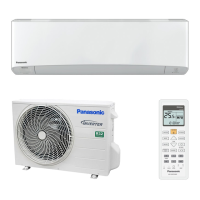

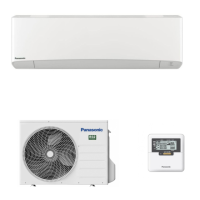



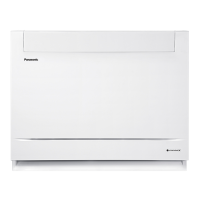
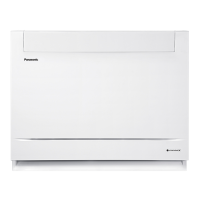
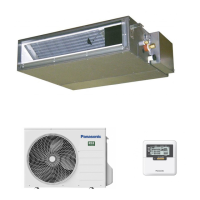
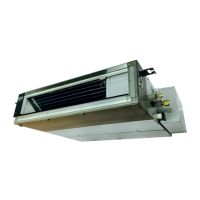
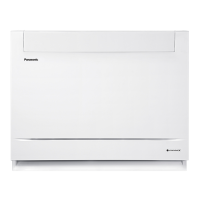
